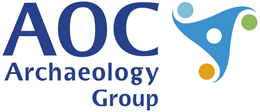Data from Archaeological Recording at Fosse Way, Hunningham, Warwickshire, 2020-2023 (HS2 Phase One)
High Speed Two Ltd., MOLA Headland Infrastructure, Headland Archaeology Ltd, Wessex Archaeology, AOC Archaeology Group, Connect Archaeology, 2024. https://doi.org/10.5284/1125948. How to cite using this DOI
Data copyright © High Speed Two Ltd. unless otherwise stated
This work is licensed under a The Open Government Licence (OGL).
Primary contact
High Speed Two Ltd.
2 Snowhill
Queensway
Birmingham
B4 6GA
United Kingdom
Tel: 08081 434 434
Resource identifiers
- ADS Collection: 5644
- DOI:https://doi.org/10.5284/1125948
- How to cite using this DOI
Introduction
![Context [23302]. Working shot of grain dryer, mid-excavation. From archaeological mitigation at Fosse Way, Warwickshire, Area 2, HS2 Northern Section](images/HS2N-1N19ITCAR-240025.jpg)
This collection comprises digital data (images, reports, spreadsheets, scanned site records, GIS, database, CAD, and a video) from a programme of archaeological recording at Fosse Way, Offchurch / River Leam, Warwickshire. The fieldwork was undertaken by Headland Archaeology and Connect Archaeology between November 2019 and November 2020.
The collection also contains a video webinar recording by Wessex Archaeology summarising their work for HS2 at Fosse Way.
The project forms part of Phase One of the High Speed 2 (HS2) rail project, which will involve the construction of a new railway approximately 230km (143 miles) in length between London and the West Midlands. Powers for the construction, operation and maintenance of Phase One are conferred by the High-Speed Rail (London - West Midlands) Act 2017.
Project Summary - Headland
Headland Archaeology Ltd conducted archaeological investigation, involving geophysical survey, metal-detecting survey and archaeological mitigation at Fosse Way, Offchurch/River Leam, Warwickshire. Works were carried out as part of the construction land requirements for the enabling works and subsequent main works for HS2 Phase One.
Area 1 demonstrated partial survival of several rectilinear and curvilinear enclosures with at least three roundhouses, alongside numerous discrete features. Sherds of Middle Iron Age pottery were found in features across the mitigation area and several fragments of quern stone were recovered. Ecofactual data recovered included spelt, barley and bread wheat. With few of the features showing evidence of recutting, alongside only Middle Iron Age pottery, evidence appears to indicate that the settlement was relatively short lived. The paucity of finds across the western half of the mitigation area and a gradual petering out of features, would suggest that the mitigation area is on the periphery of the main settlement, which likely sits in the field to the east (as indicated by earlier geophysical surveys).
Area 2 West contained two rectilinear enclosure systems, with one situated to the west and one the east or an SSW-NNE aligned trackway. Most features contained sherds of Roman pottery, with greyware being the most common type. The eastern enclosure system contained a probable grain dryer with a typical T-shaped form. Environmental samples from the feature revealed a focus on spelt. Area 2 East contained two better preserved grain dryers, with one retaining stonework up to 4 courses high. This grain dryer appeared to focus around the processing of barley. Area 2 East also contained a linear arrangement of what are tentatively interpreted as post-pads, indicating that wooden structures may have stood in this area. A large number of quern stone fragments were recorded across Area 2 as a whole. The multiple grain dryers, quern stone fragments and occurrences of spelt, bread wheat and barley across the mitigation area, indicate the area was likely used for the processing of cereals.
Project Summary - Connect (Area 3)
Archaeological mitigation works were carried out by Connect Archaeology between 4th of November and 18th of December 2019 at WP29C Fosse Way, Offchurch / River Leam. Mitigation Area 3 had been identified as having archaeological potential during previous archaeological investigations. A geophysical survey had identified the presence of a several linear and curvilinear features in this area, of likely archaeological origin. Subsequently, a 276 trench archaeological evaluation was carried out, which revealed three distinct areas of archaeological features, including pits, ditches, gullies and postholes, which necessitated further mitigation.









